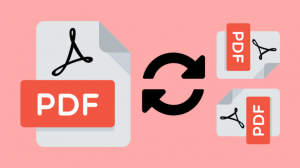Are you a contractor who needs to estimate jobs quickly and accurately? Construction estimating is one of the most important skills you can possess as a contractor. With this knowledge, you will be able to bid on jobs with confidence and win more work.
As a contractor, you know that accurate estimates are critical to the online construction quoting and success of your business. The more accurate and efficient your estimating process is, the more money you will save and the more projects you will win. You can achieve it using construction procurement software and some tips and tricks designed to help streamline your business operation.
10 Steps to Estimate Construction Projects
The following are the key steps in the construction project estimation process:
Establish the Project Scope
The first step in any estimation process is to define the scope of the project. This means understanding what work needs to be done, how long it will take, and what materials will be required. If you bid on a project, be sure to read the RFP carefully to understand the work that must be done.
Investigate Local Prices
Then, you should start researching local costs for materials and labor. You can do it by contacting suppliers or searching online for cost data from your area.
Consider Your Overhead Costs
In addition to materials and labor, you will also need to factor in your overhead costs when estimating a project. These are costs that are not directly related to the project itself but are necessary for your business to function. Examples of overhead costs include office rent, insurance, equipment rentals, etc.
Know Your Profit Margin
Before you can start creating estimates, you need to know what profit margin you want to make on a project. Your profit margin is the percentage of the total project cost that you want to keep as profit.
Use Software to Make Estimates
Once you have all the necessary information, you need to start creating estimates using software like Excel or Procore Estimate. It will help you track your costs so that you can see where every dollar goes and make the needed adjustments.
Review Your Estimates Regularly
Following that, it is important to review estimates regularly to ensure that all of the information is up-to-date and accurate. Things like material prices and labor costs can fluctuate over time, so it is important to adjust your estimates accordingly.
Get Feedback from Others
Once you have created an estimate, you should focus on getting feedback from other people in your company, especially if they have more experience than you do. It will ensure that you have not missed anything important and will give you peace of mind knowing that your estimate is as accurate as possible.
Use Historical Data
If you have been in business for a while, chances are you have some historical data that can be used to create more accurate estimates in the future. Things like past job invoices and timesheets can help determine how much time and money certain tasks will take in the future.
Keep Your Processes Up to Date
As with anything in business, you should update and improve your estimating process so that it becomes more efficient over time.
Understand Your Client’s Needs
When creating an estimate, you should understand your client’s needs, not only their budget requirements but also their timeline and desired outcome for the project.
By considering these things, you will be able to create an estimate that meets your customer’s needs and sets your company up for success.
Follow TechRado for more!





